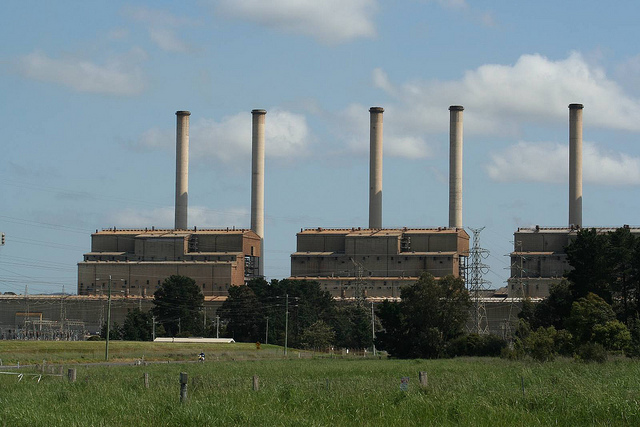Situated in Victoria’s Latrobe Valley, Hazelwood Power Station has been one of the worst carbon-polluting electricity generators in the world for almost 50 years—but now it’s history.
Hazelwood Power Station’s eight generation units were finally shut off as it ceased operations on March 29.
Established somewhere between 1964 and 1971, Hazelwood has since its inception been powered by brown coal which resulted in atrocious levels of carbon emissions alongside carbon dioxide which the plant spewed at the rate of 1,558kg/MWh of power generated (around 15 million tonnes annually). The power plant was blamed for contributing about 3 per cent to Australia’s overall greenhouse gas output.
Is.Hazelwood.Online has also released the plant’s annual pollution payload as follows:
- 25,000 tonnes of nitrogen oxides
- 14,000 tonnes of sulfur dioxide
- 7,700 tonnes of hydrochloric acid
- 6,900 tonnes of carbon monoxide
- 4,800 tonnes of fine particulate matter
- 440 kg of mercury
- 140 kg of lead
- 74 kg of arsenic
In the past, Environment Victoria said Hazelwood gobbled 27 billion litres of water each year and was the highest emitter of dioxins nationally. Thankfully, all that is now in the past.
The station’s closure comes with mixed reactions. While environmentalists celebrate on one end, others and especially the affected workers are concerned for obvious reasons.
For Hazelwood, the closure’s writing has been on the wall for nearly two decades, considering the proposal to have it retired was initially made in 2005 but the owners were allowed to continue with operations.
In 2010, a report was published with an outline on how clean and sustainable renewable energy projects could replace Hazelwood by end of 2012. Had the plan been implemented, more jobs than those of Hazelwood would have been created.
The plant’s owners announced its closure November last year citing its operations were no longer viable, commercially.
Now that Hazelwood, which represented 20 per cent of all electricity generated in Victoria and 5 per cent of the overall National Electricity Market is finally offline, what becomes of our energy security? Sydney Morning Herald says:
“…the Australian Energy Market Operator [AEMO] said Hazelwood’s closure would be offset by the availability of three mothballed gas-fired stations – one each in South Australia, Tasmania and Queensland – and large industrial businesses agreeing to time-shift their electricity use in the event of an emergency.”
Even though Hazelwood’s shutdown represents the end of a toxic era, the site’s legacy still remains and must be considered even as relevant authorities try to see what to do with the remaining brown coal at the adjacent mine.



